- Clone
- W19330E (See other available formats)
- Regulatory Status
- RUO
- Other Names
- CSF-1R, M-CSR, c-fms
- Isotype
- Rat IgG2a, κ
- Ave. Rating
- Submit a Review
- Product Citations
- publications
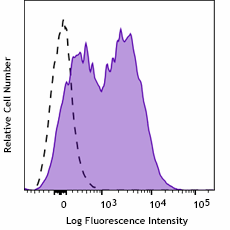
-

Thioglycolate-elicited BALB/c mouse peritoneal macrophages were stained with PE anti-mouse CD115 (clone W19330E) (filled histogram) or rat IgG2a, κ PE isotype control (open histogram).
| Cat # | Size | Price | Save |
|---|---|---|---|
| 165203 | 25 µg | ¥22,880 | |
| 165204 | 100 µg | ¥55,660 |
CSF-1R, also known as CD115 and M-CSFR, is a single-pass type I membrane protein and member of the platelet-derived growth factor receptor family. This c-fms (Fms proto-oncogene) gene product's natural ligands include M-CSF and IL-34. Structural studies of CD115 have described an Ig-like extracellular domain, a transmembrane domain, an intracellular juxtamembrane domain, a split tyrosine kinase domain, and a C-terminal tail receptor. Receptor activation induces homodimerization in addition to phosphorylation and ubiquitination of intracellular residues. CD115 directly influences tissue macrophage and osteoclast differentiation and proliferation. It is expressed on monocytes/macrophages, peritoneal exudate cells, plasmacytoid and conventional dendritic cells, and osteoclasts.
Product DetailsProduct Details
- Verified Reactivity
- Mouse
- Antibody Type
- Monoclonal
- Host Species
- Rat
- Immunogen
- Mouse CD115 transfected cells
- Formulation
- Phosphate-buffered solution, pH 7.2, containing 0.09% sodium azide
- Preparation
- The antibody was purified by affinity chromatography and conjugated with PE under optimal conditions.
- Concentration
- 0.2 mg/mL
- Storage & Handling
- The antibody solution should be stored undiluted between 2°C and 8°C, and protected from prolonged exposure to light. Do not freeze.
- Application
-
FC - Quality tested
- Recommended Usage
-
Each lot of this antibody is quality control tested by immunofluorescent staining with flow cytometric analysis. For flow cytometric staining, the suggested use of this reagent is ≤ 0.25 µg per million cells in 100 µL volume. It is recommended that the reagent be titrated for optimal performance for each application.
- Excitation Laser
-
Blue Laser (488 nm)
Green Laser (532 nm)/Yellow-Green Laser (561 nm)
- Application Notes
-
Clone W19330E does not affect binding of clone W19330C on target cells.
Clone W19330E can block clone AFS98 binding on target cells.
Clone W19330E can block ligand binding to CSFR-1. - RRID
-
AB_2910352 (BioLegend Cat. No. 165203)
Antigen Details
- Structure
- Ig superfamily, 145 kD
- Distribution
-
Monocytes/macrophages, peritoneal exudate cells, plasmacytoid and conventional dendritic cells, osteoclasts
- Function
- Growth factor receptor, tyrosine kinase
- Ligand/Receptor
- Macrophage colony stimulating factor (M-CSF), IL-34
- Cell Type
- Dendritic cells, Macrophages, Monocytes, Osteoclasts
- Biology Area
- Cell Biology, Immunology, Stem Cells
- Molecular Family
- Cytokine/Chemokine Receptors
- Antigen References
-
- Guilbert LJ and Stanley ER. 1980. J Cell Bio. 85:153-9.
- Yeung Y-G, et al. 1978. Proc Natl Acad Sci. 84:1268-71.
- Sherr CJ, et al. 1985. Cell. 41:665-76.
- Gene ID
- 12978 View all products for this Gene ID
- Specificity (DOES NOT SHOW ON TDS):
- CD115
- Specificity Alt (DOES NOT SHOW ON TDS):
- CD115
- App Abbreviation (DOES NOT SHOW ON TDS):
- FC
- UniProt
- View information about CD115 on UniProt.org
Related FAQs
- What type of PE do you use in your conjugates?
- We use R-PE in our conjugates.
Other Formats
View All CD115 Reagents Request Custom Conjugation| Description | Clone | Applications |
|---|---|---|
| Purified anti-mouse CD115 (CSF-1R) | W19330E | FC |
| PE anti-mouse CD115 (CSF-1R) | W19330E | FC |
Customers Also Purchased
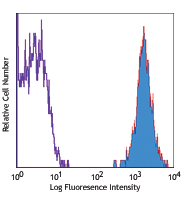
Compare Data Across All Formats
This data display is provided for general comparisons between formats.
Your actual data may vary due to variations in samples, target cells, instruments and their settings, staining conditions, and other factors.
If you need assistance with selecting the best format contact our expert technical support team.
-
Purified anti-mouse CD115 (CSF-1R)
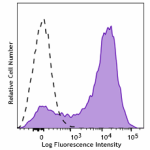
Thioglycolate-elicited BALB/c mouse peritoneal macrophages w... -
PE anti-mouse CD115 (CSF-1R)
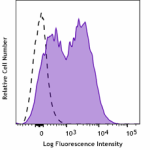
Thioglycolate-elicited BALB/c mouse peritoneal macrophages w...











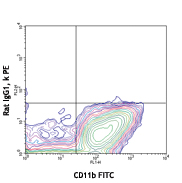
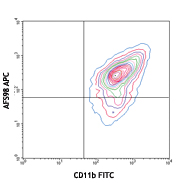



Follow Us